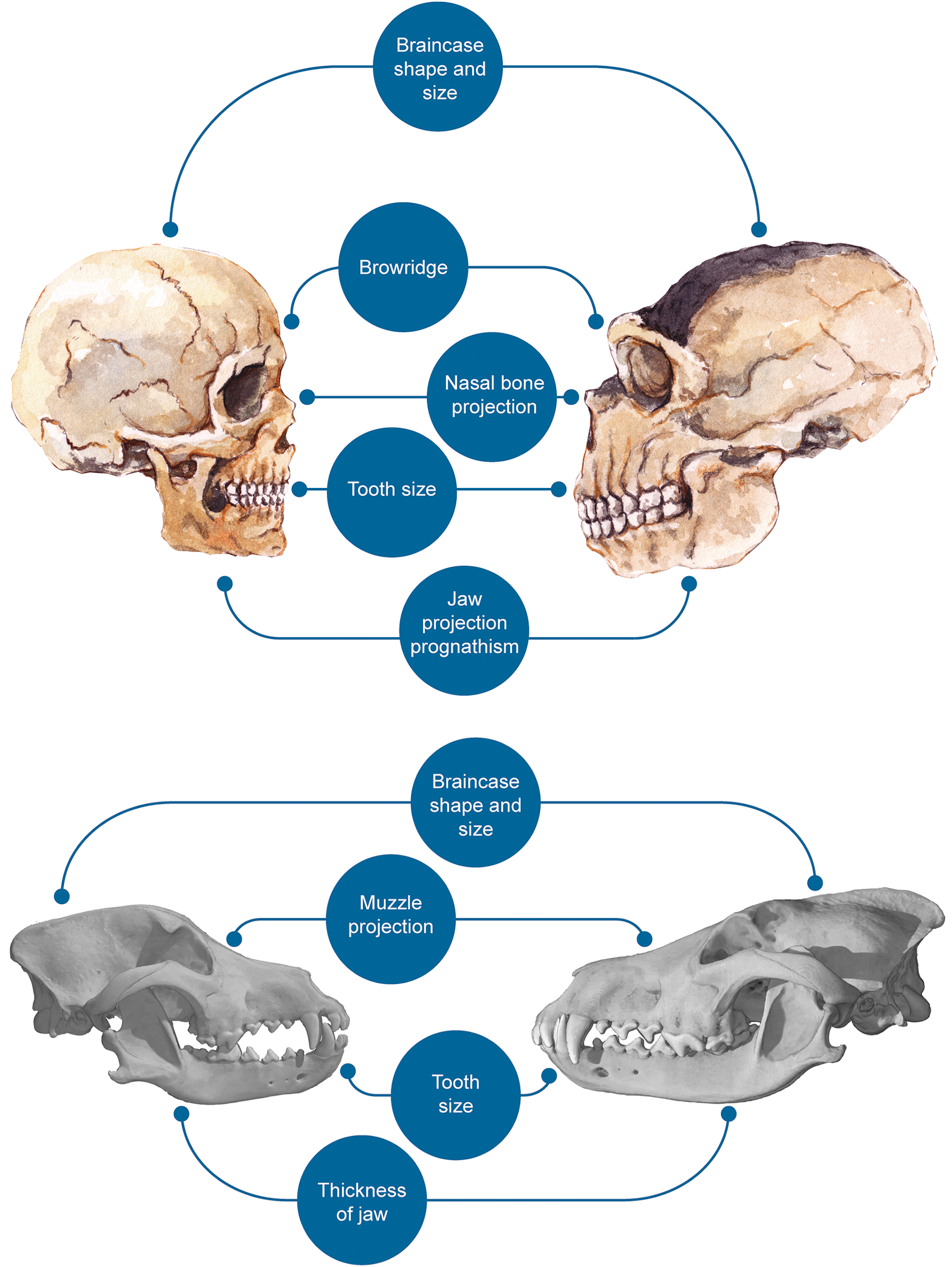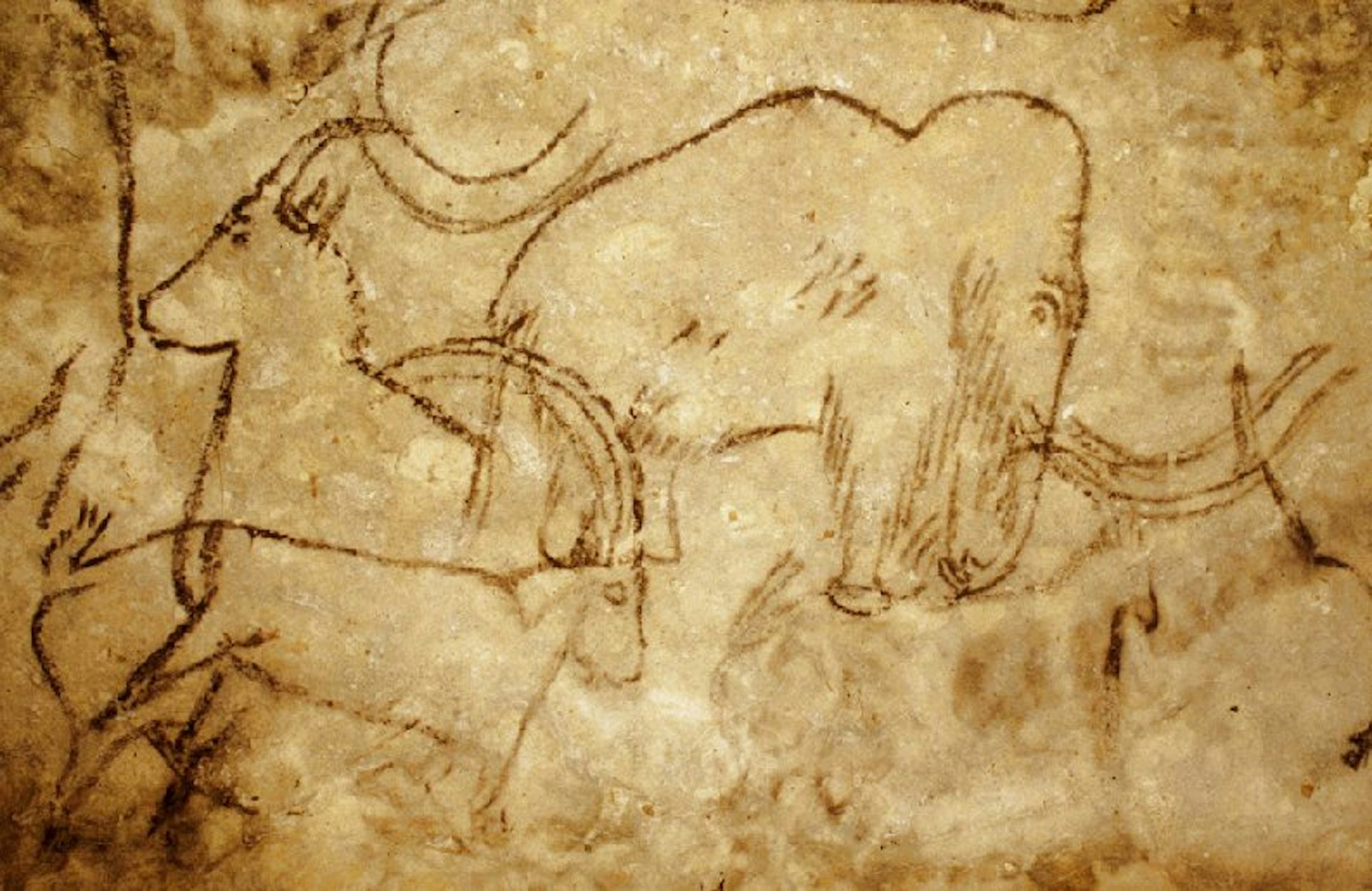8 billion people: how different the world would look if Neanderthals had prevailed
In the third of this series of articles reprinted from The Conversation, dealing with the recent evolutionary history of modern humans, Professor Penny Spikins, Professor of the Archaeology of Human Origins, University of York, UK, poses the question of how different the world would look today had the Neanderthals prevailed and not gone extinct, or, as more recent research suggests, been absorbed into the increasing and expanding population of Homo sapiens as they moved into the territory formerly occupied by Neanderthals.
An intriguing thought from this article is that humans, by forming large, urbanised groups, effectively domesticated themselves and so acquired some of the attributes of domestication that we see in, for example, domestic cattle, who now live in far larger, and more tolerant groups than their wild ancestors who lived in small groups where each individual could have a wide 'personal space'. Tolerance for others, the key to successful human groups, thus may have been a consequence as well as a cause of the formation of large human groups.
Because of the nature of their societies, where small, isolated extended family groups, separated from other bands by considerable distances, Neanderthals never self-domesticated, so never developed the mutual tolerance needed to form large, cooperative groups of unrelated individuals. In addition to their lack of genetic diversity within the group, this may have played a part in their eventual demise/absorption.
Professor Spikins' article has been reformatted for stylistic consistency. The original can be read here:

8 billion people: how different the world would look if Neanderthals had prevailed

Neanderthal reproduction in Trento Museum of Natural History.
Credit: Luca Lorenzelli/Shutterstock
Penny Spikins, University of York
In evolutionary terms, the human population has rocketed in seconds. The news that it has now reached 8 billion seems inexplicable when you think about our history.
For 99% of the last million years of our existence, people rarely came across other humans. There were only around 10,000 Neanderthals living at any one time. Today, there are around 800,000 people in the same space that was occupied by one Neanderthal. What’s more, since humans live in social groups, the next nearest Neanderthal group was probably well over 100km away. Finding a mate outside your own family was a challenge.
Neanderthals were more inclined to stay in their family groups and were warier of new people. If they had outcompeted our own species (Homo sapiens), the density of population would likely be far lower. It’s hard to imagine them building cities, for example, given that they were genetically disposed to being less friendly to those beyond their immediate family.
The reasons for our dramatic population growth may lie in the early days of Homo sapiens more than 100,000 years ago. Genetic and anatomical differences between us and extinct species such as Neanderthals made us more similar to domesticated animal species. Large herds of cows, for example, can better tolerate the stress of living in a small space together than their wild ancestors who lived in small groups, spaced apart. These genetic differences changed our attitudes to people outside our own group. We became more tolerant.

Similarities between modern humans and domesticated dogs, in contrast to archaic humans (here Neanderthal) and wild wolves.
As Homo sapiens were more likely to interact with groups outside their family, they created a more diverse genetic pool which reduced health problems. Neanderthals at El Sidrón in Spain showed 17 genetic deformities in only 13 people, for example. Such mutations were virtually nonexistent in later populations of our own species.
But larger populations also increase the spread of disease. Neanderthals might have typically lived shorter lives than modern humans, but their relative isolation will have protected them from the infectious diseases that sometimes wiped out whole populations of Homo sapiens.
Putting more food on the table
Our species may also have had 10%-20% faster rates of reproduction than earlier species of human. But having more babies only increases the population if there is enough food for them to eat.
Our genetic inclination for friendliness took shape around 200,000 years ago. From this time onwards, there is archaeological evidence of the raw materials to make tools being moved around the landscape more widely.
From 100,000 years ago, we created networks along which new types of hunting weapons and jewellery such as shell beads could spread. Ideas were shared widely and there were seasonal aggregations where Homo sapiens got together for rituals and socialising. People had friends to depend on in different groups when they were short of food.
And we may have also needed more emotional contact and new types of relationship outside our human social worlds. In an alternative world where Neanderthals thrived, it may be less likely that humans would have nurtured relationships with animals through domestication.
Dramatic shifts in environment
Things might also have been different had environments not generated so many sudden shortfalls, such as steep declines in plants and animals, on many occasions. If it wasn’t for these chance changes, Neanderthals may have survived.
Sharing resources and ideas between groups allowed people to live more efficiently off the land, by distributing more effective technologies and giving each other food at times of crisis. This was probably one of the main reasons why our species thrived when the climate changed while others died. Homo sapiens were better adapted to weather variable and risky conditions. This is partly because our species could depend on networks in times of crisis.
During the height of the last ice age around 20,000 years ago, temperatures across Europe were 8-10℃ degrees lower than today, with those in Germany being more like northern Siberia is now. Most of northern Europe was covered in ice for six-to-nine months of the year.
Social connections provided the means by which inventions could spread between groups to help us adapt. These included spear throwers to make hunting more efficient, fine needles to make fitted clothing and keep people warmer, food storage, and hunting with domesticated wolves. As a result, more people survived nature’s wheel of fortune.
Homo sapiens were generally careful not to overconsume resources like deer or fish, and were likely more aware of their lifecycles than much earlier species of human might have been. For example, people in British Columbia, Canada, only took males when they fished for salmon.
In some cases, however, these lifecyles were hard to see. During the last ice age, animals such as mammoths, which roamed over huge territories invisible to human groups, went extinct. There are more than a hundred depictions of mammoths at Rouffignac in France dating to the time of their disappearance, which suggests people grieved this loss. But it is more likely mammoths would have survived if it wasn’t for the rise of Homo sapiens, because there would have been fewer Neanderthals to hunt them.

Depiction of a mammoth at Rouffignac Cave in France.
Credit: Wikimedia Commons
Too clever for our own good
Our liking for each other’s company and the way spending time together fosters our creativity was the making of our species. But it came at a price.
The more technology humankind develops, the more our use of it harms the planet. Intensive farming is draining our soils of nutrients, overfishing is wrecking the seas, and the greenhouse gases we release when we produce the products we now rely on are driving extreme weather. Overexploitation wasn’t inevitable but our species was the first to do it.
We can hope that visual evidence of the destruction in our natural world will change our attitudes in time. We have changed quickly when we needed to throughout our history. There is, after all, no planet B. But if Neanderthals had survived instead of us, we would never have needed one.





Thank you for very interesting information...
ReplyDelete